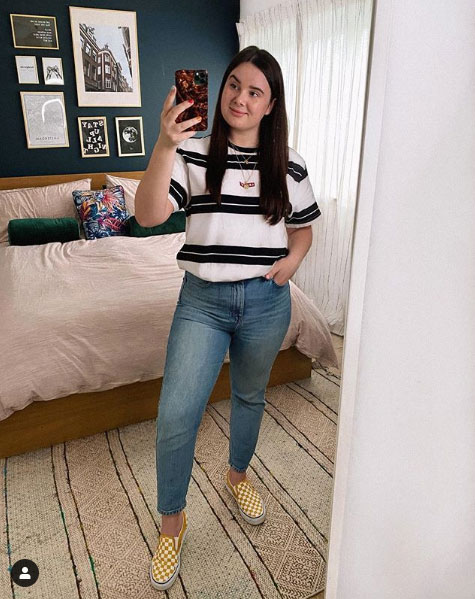
Just now, today, literally seconds before I started writing this very sentence, I heard of a thing called “Cottagecore.”
Apparently that’s when folks are into and promote old-timey chores like gathering berries and making butter by hand and other crafts of that ilk. I think that’s wonderful. Make fun of Portlandia hipsters all you want (I do, that is, make fun of them all I want) but if people like something, let them like it, I say.
What I find fascinating is that there’s a word for this at all. And what a great word! I really dig that “-core” part. I was aware of -core things but not at this level. The very brief research I did on Cottagecore also mentions Grandmacore, Farmcore, Goblincore and Fairiecore. This is fantastic. I mean, come on- how can anyone not find the nomenclature “Grandmacore” fascinating?
It reminds me, in a way, of “Shabby chic,” which a friend told me describes her interior design aesthetic. I mean it reminds me not of the aesthetic itself, but of the nomenclature, the “chic” part. So damn cool. If her distressed entertainment center and tea-stained throw pillows are Shabby chic, then my shelf of Lego mini-figures and poster of Brandon Lee from The Crow could be “Sad Geek chic.” I am being serious here.
And I know “-core” is used for some music styles. “Nerdcore” involves rapping about Star Wars and RPGs. “Metalcore” is heavy metal mixed with punk, and includes sub-genres such as “Mathcore,” “Deathcore,” and “Electroniccore.” I have never listened to Deathcore, (not that there’s anything wrong with it) but I do enjoy doodling the word on bits of scrap paper when I’m on boring conference calls.
Also, and the reason I’m even writing this, the use of “-core” reminds me “-punk.” You’ve heard of Steampunk, of course. That’s an aesthetic design that draws from the steam-powered tech of the late 19th century. In books, it’s a sub-genre of science-fiction. There’s also Cyberpunk, an aesthetic grounded in high tech juxtaposed with dystopian points of view.
I’d argue that you can create a -punk aesthetic, basically, by picking a particular level of technology, root a world in it, then start telling stories with contemporary themes, challenges, and characters. For example, there’s The Flintstones— that’s “Stonepunk.” You can go even further, by using fictional technologies. The Jetsons, for example. I’d call that “Retro-futurepunk.”
It’s not just that we’re creating fantasy or sci-fi settings. The idea is that the aesthetic is as much a character as any of the characters. Argumentatively, Game of Thrones could be re-skinned as a sci-fi epic, and the same story could be told. Or Star Trek could be redone as a western. But try re-writing Mona Lisa Overdrive as a tale set in 18th century Japan. I mean, Molly Millions would make a compelling samurai, but you’d lose that cyberpunk theme of humanity evolving itself into extinction.
Oh sure, a really really good writer could pull it off, I guess, but when we read -punk novels, we do so for the immersion. When we were kids, they told us that books can take us any place we want to go. And -punk novels fulfill that promise by letting us live there (for a few hundred pages). “Mona Lisa Shogun” could be immersive, but I think you’d lose all that cozy existential angst that Cyberpunk offers up for your consumption and pleasure.
Back to -core. All of the above, going from -core to -chic to -punk, lit up my brain as soon as I read the word Cottagecore. So now I have to wonder what a Cottagepunk story would look like.
Off the top of my head, Cottagepunk would be a world where all technology is rooted in home-style crafts and such. A TV would be a wooden box with a needle-point “screen.” People would create, trade, and comment on bread recipes. Instead of guns, the 2nd Amendment would be about the right to bear pitchforks. Romeo falls in love with Juliet, but Romeo’s family farms corn and Juliet’s farms beets.
Essentially, I’m thinking the characters from Winnie the Pooh, turned human, and then the plot from Die Hard. Maybe I’ll give it a try, since I like goofing with this sort of thing. I once tried to write a steam-punk-lego-star-wars-zombie story. It wasn’t any good, but it was fun. And that’s all that really matters.
This nomenclature, these -cores and -chics and -punks, they’re interchangeable. You could call it Cyber chic or Shabbypunk or Stonecore if you wanted. Heck, write a novel about an old woman who runs for president on a platform of Make Baking Great Again but she wins by hacking the voting booths and call it “Granniegate: a Gardencore novel.”
For me, naming that aesthetic, creating the nomenclature, that’s where the fun starts, because then we can start imagining things we never imagined we could imagine before.
Whoa. Mind blown. I need a homemade cookie and a Juul.





